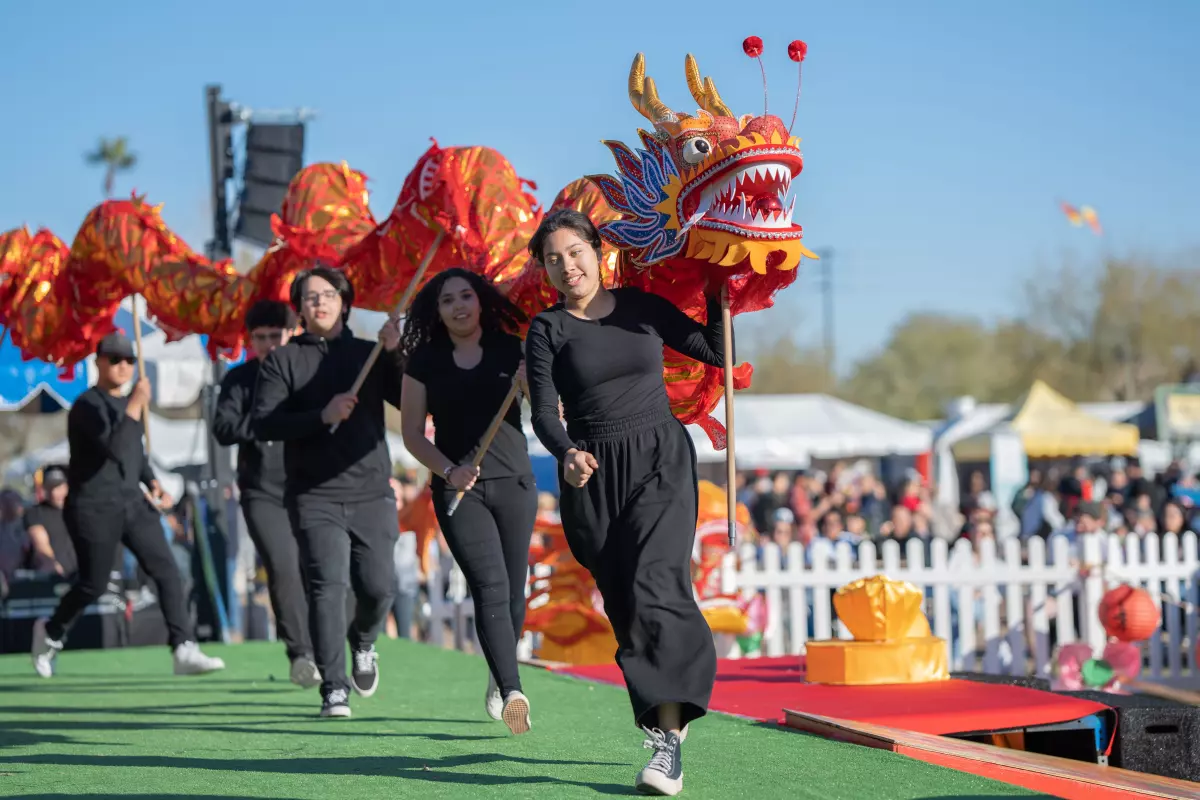 Chinese New Year 2024: Dates, this year's animal, and why it's also called Lunar New Year
Chinese New Year 2024: Dates, this year's animal, and why it's also called Lunar New Year
Lunar New Year, also known as Chinese New Year, is right around the corner, bringing with it a host of exciting traditions and celebrations. As this vibrant festival approaches, it's natural to have questions about its origins, customs, and the significance of the new year animal. Allow us to shed some light on these topics and get you ready for an unforgettable Lunar New Year experience.
When is Chinese New Year 2024?
Chinese New Year 2024 begins on February 10th and ends on February 24th. It spans roughly 15 days, with additional festivities occurring a few days before and after the official dates.
The Year of the Dragon
In 2024, we welcome the majestic Year of the Dragon. In Chinese culture, the dragon symbolizes auspiciousness, imperial power, and strength. It is a creature associated with dignity, health, honor, luck, and success. The dragon's presence in the zodiac promises a year filled with positive energy and good fortune.
Exploring the Chinese Zodiac
The Chinese zodiac consists of twelve animal symbols, each representing a specific birth year. Here are the animals and their associated birth years:
- Rat: 1924, 1936, 1948, 1960, 1972, 1984, 1996, 2008, 2020
- Ox: 1925, 1937, 1949, 1961, 1973, 1985, 1997, 2009, 2021
- Tiger: 1926, 1938, 1950, 1962, 1974, 1986, 1998, 2010, 2022
- Rabbit: 1927, 1939, 1951, 1963, 1975, 1987, 1999, 2011, 2023
- Dragon: 1928, 1940, 1952, 1964, 1976, 1988, 2000, 2012, 2024
- Snake: 1929, 1941, 1953, 1965, 1977, 1989, 2001, 2013
- Horse: 1930, 1942, 1954, 1966, 1978, 1990, 2002, 2014
- Sheep/Goat: 1931, 1943, 1955, 1967, 1979, 1991, 2003, 2015
- Monkey: 1932, 1944, 1956, 1968, 1980, 1992, 2004, 2016
- Rooster: 1933, 1945, 1957, 1969, 1981, 1993, 2005, 2017
- Dog: 1934, 1946, 1958, 1970, 1982, 1994, 2006, 2018
- Boar/Pig: 1935, 1947, 1959, 1971, 1983, 1995, 2007, 2019
Unlocking the Symbolism of Lunar New Year
Lunar New Year, also known as the Spring Festival in China, is a celebration that marks the arrival of spring. It's a time to bid farewell to the old year and welcome new beginnings, good luck, and prosperity. Throughout the festival, you'll encounter vibrant traditions, including fireworks, dragon dances, feasts, and the honoring of ancestors.
Understanding Chinese New Year and Lunar New Year
Chinese New Year and Lunar New Year are used interchangeably to refer to the same celebration. The term "Lunar New Year" acknowledges the fact that many countries, beyond China, partake in the festivities. South Korea, Vietnam, and several other East Asian countries embrace this vibrant occasion and bring their unique customs and traditions to it.
Origins of Lunar New Year
The origins of the Lunar New Year festival are steeped in ancient legends. One of the most well-known stories dates back thousands of years and centers around a fearsome beast called Nian. This creature would emerge on New Year's Day and devour humans. However, people discovered that Nian was afraid of the color red, loud noises, and fire. To ward off the beast, they decorated their doors with red paper, lit lanterns, and set off firecrackers.
Global Traditions of Chinese New Year
Chinese New Year traditions have spread far beyond their country of origin and are celebrated worldwide. Let's take a closer look at how different cultures embrace this joyous occasion:
-
Vietnam: Vietnamese Lunar New Year traditions include parades featuring the Mua Lan, a powerful mythical creature that combines elements of a lion, dragon, and unicorn. Burning incense and inviting ancestors to join in the celebrations are also significant practices.
-
Korea: In Korea, people traditionally wear the hanbok, a formal attire, during Lunar New Year festivities. However, modern celebrations often involve more casual clothing choices. Offering paper money in silk bags with traditional designs, known as Sebaetdon, is another cherished tradition.
-
United States and Beyond: As Chinese communities have migrated across the globe, their vibrant traditions have become part of diverse cultures worldwide. Lantern festivals, dragon dances, and family gatherings are among the popular ways people celebrate Lunar New Year in various countries.
7 Lucky Foods for Chinese New Year
Food plays a central role in Chinese New Year celebrations. These seven lucky foods symbolize prosperity and are believed to bring good fortune for the year ahead:
- Yú (Fish): Represents an increase in prosperity.
- Jiaozi (Dumplings): Portray wealth and abundance.
- Chun Juan (Spring Rolls): Symbolize wealth and prosperity.
- Tang Yuan (Glutinous Rice Balls): Encourage family togetherness.
- Good Fortune Fruit: Brings fullness and wealth.
- Nian Gao (Sticky Rice Cakes): Attracts higher income or a higher position.
- Chang Shou Mian (Longevity Noodles): Ensures happiness and longevity.
With these symbolic foods, people hope for a year filled with abundance, good luck, and happiness.
So, as Chinese New Year approaches, get ready to embrace the festivities, enjoy the delicious cuisine, and immerse yourself in the rich traditions of this vibrant celebration. May the Year of the Dragon bring you prosperity, good health, and countless joyous moments. Happy Lunar New Year!
Reach the reporter at [email protected]. Follow @dina_kaur on X, formerly known as Twitter.
Support local journalism. Subscribe to azcentral.com today.













